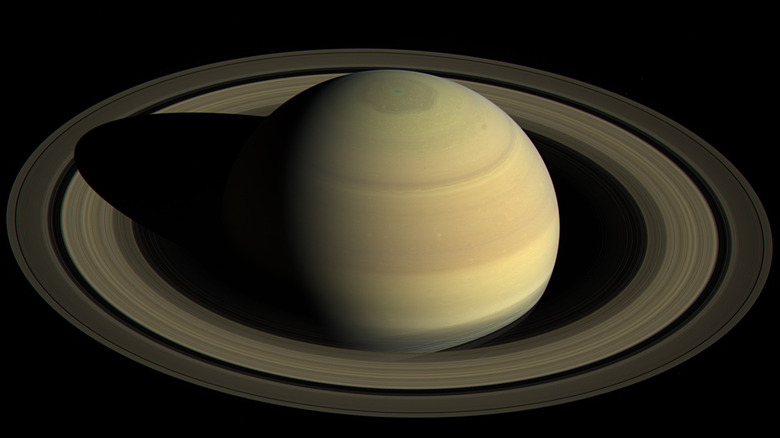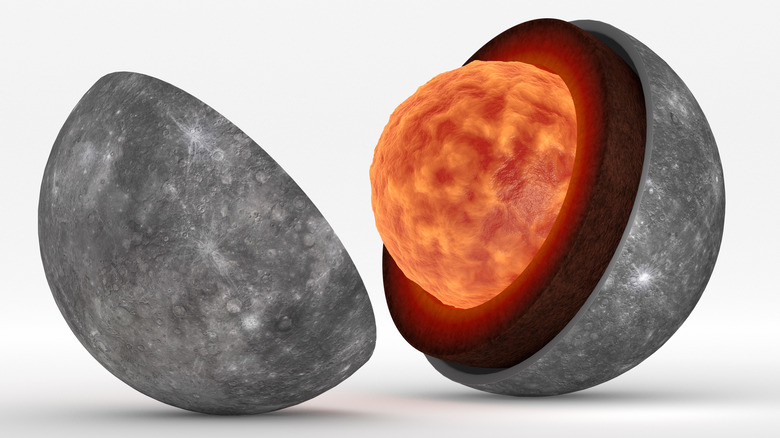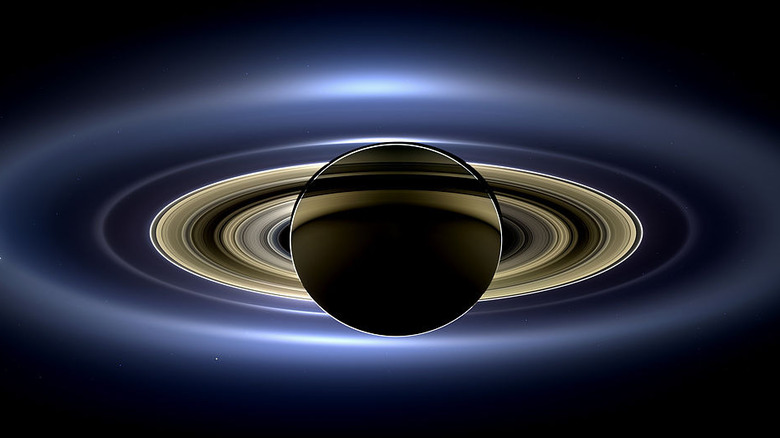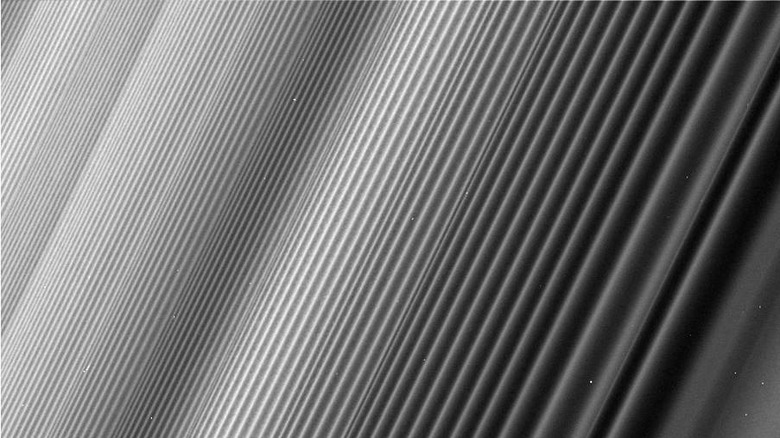Why Scientists Have Reason To Believe Saturn's Core Is Oddly 'Fuzzy'
Among all the celestial bodies that orbit the sun, arguably none elicits quite as much wonder as Saturn. Humanity has been observing Saturn, as well as the other planets visible to the naked eye, for a long time, and we've invented a wealth of mythology around its movements and location.
The first person to take a good look at the planet was Galileo Galilei in 1610. Because his telescope was kind of shoddy (it was one of the first ever invented, after all), he couldn't properly resolve its famous rings; he only knew that there was something around it. The mystery was solved almost 50 years later by Dutch astronomer Christiaan Huygens, according to NASA.
Today, instead of peering up at Saturn and its rings from the confines of our little rock, we send probes and satellites to explore for us. Pioneer 11 was the first to enter the Saturnian system in 1979. Voyager 1 and 2 followed in 1980 and 1981, and Cassini arrived in 2004. Even though Cassini plunged into the cloudy depths of Saturn in 2017 and no spacecraft have returned since, it's still teaching us about not just the system of rings and moons surrounding the gas giant, but its interior as well.
Core issue
When our planet first took shape, it was a mashup of rocks, dust, and gas. As more and more stuff came together, the temperature rose until it was hot enough to melt iron — allowing the disparate elements of the young Earth to stratify itself into a core, mantle, crust, and atmosphere, per National Geographic.
We know Earth has stratified layers thanks to seismology. As the crust of the planet moves about over the mantle, it sends waves through the ground that can be detected on the other side of the world. The timing and location of the waves show that there is a liquid and solid core at the heart of our planet, per American Museum of Natural History.
Scientists have used similar techniques to deduce the internal structure of Mars and the moon, according to Science and NASA, respectively. Yet without a solid surface to land on, the interiors of the gas giant planets have been something of a mystery. But thanks to its rings, scientists have begun to be able to pierce the veil of Saturn's atmosphere and get a glimpse of its core in the process.
An order of rings, please
Christiaan Huygens may have been the first to recognize Saturn's rings for what they are in the 17th century, but the mystery of their structure wouldn't be solved for over 200 years when James Clerk Maxwell showed that they could only be composed of a cloud of small satellites, and they were not a solid or liquid object as had been previously theorized. It wasn't until 1895 that James Keeler could observationally prove what Maxwell had demonstrated with mathematics.
The particulate nature of Saturn's rings has been a boon to scientists who study the planet. Back in the '80s and '90s, a handful of researchers predicted that the hidden internal seismology of Saturn would have a direct, observable effect on the rings in the form of waves. At the time, it was impossible to get a close enough view of the rings to test this hypothesis, but all that changed with the arrival of the Cassini probe in 2004.
Unlike the Pioneer and Voyager missions of the '70s and '80s, Cassini wasn't just flying by: it was there for the long haul. Its 13-year mission allowed it to make much more detailed observations of the Saturnian system than had previously been possible, according to Eos.
Making waves
Some ring waves, like the ones caused by two of Saturn's moons, are relatively easy to discover. The waves caused by seismic activity within Saturn are a little bit more difficult to spot. In order to measure these waves, scientists peered through the rings at distant stars, and based on how the rings blocked and changed the starlight, they could determine the shape of the waves.
One thing these newly-discovered waves have revealed is the length of Saturn's day, or how long it takes to spin about its axis. Before these measurements, scientists had only been able to guess at the length of the Saturnian day. But thanks to ring perturbations due to Saturn's internal oscillations, researchers have been able to pin its rotational period down to over 10 hours and 33 minutes.
Perhaps the most interesting bit of information to come out of studying ring waves is that Saturn likely doesn't have a clearly defined core. To account for the seismic waves in the rings, scientists developed a number of models for Saturn's interior and ran them through simulations looking for which one most closely reflected the actual waves. It turns out that the only model that works is one in which instead of a hard metal core, Saturn's interior gradually transitions from gaseous atmosphere to a sludge of ice and rock. This challenges the idea that gas giants form around a rocky core and will cause researchers to rethink their theories, according to Caltech.



